Last month, DC Comics kicked off the start of its Rebirth initiative. After a wave of criticism surrounding the way they have treated their characters’ rich histories since 2011’s New 52 relaunch, DC has decided to rebrand. They hope that by restoring their characters’ pasts, they will restore readers’ faith in them as well. Do they succeed? That’s what the Comics Beat managing editor Alex Lu and entertainment editor Kyle Pinion are here to discuss. Book by book. Panel by panel.
Welcome to month two of DC Reborn!
Note: the review below contains **spoilers**. If you want a quick, spoiler-free buy/pass recommendation on this book, check out the bottom of the article for our final verdict.
 Wonder Woman #2
Wonder Woman #2
Writer: Greg Rucka
Artist: Nicola Scott
Colorist: Romulo Fajardo, Jr.
Letters: Jodi Wynne
Kyle Pinion: I’ve of two minds about the premise of the Greg Rucka-Nicola Scott collaboration we’re witnessing in Wonder Woman #2 (and every subsequent even-numbered issue of the series for the next 6 months). I remain in love with the idea that everything Diana has learned about her past being a lie, having serious ramifications in the present storyline (drawn by Liam Sharp), and I presume the actions that triggered these deceptions may be unfurling before us in “Wonder Woman Year One”. It’s a clever way to handle both the needs of a bi-weekly publishing schedule as well as alter the character to suit the needs of the story that’s being told. With that said, I’m also a bit exhausted of reading Wonder Woman origin tales in such a short amount of time. Between Wonder Woman: Earth One and The Legend of Wonder Woman already having seen release earlier this year, the origin of Diana and how she came to be really does feel like well-trod territory and it’s hard to imagine what new wrinkles Rucka and Scott can uncover.
For an initial issue of the story-line, this is a good start. Yes, it hits the expected beats, particularly where Diana’s wanderlust and curiosity about the world outside of paradise is concerned. But, Rucka also renews his focus a bit on Steve Trevor in a way that writers often eschew – why write about the boring army guy when you’ve got this incredibly rich and loving character who is discovering the truth about her origins and her environment? I like how Rucka and Scott literally split time between both characters in a way that’s reminiscent of Batman and Gordon shared focus in Frank Miller’s seminal Batman: Year One. We learn about Steve’s relationship with his “swim buddy” Nick, how deep their connection runs – with Steve being named the godfather of Nick and his wife, Maya’s, child – while also displaying perhaps a profound sense of loneliness or even longing that Steve feels in just a few short panels. I was duly impressed with how much emotion this creative nucleus was able to uncover in these pages regarding his character and that’s probably why I warmed to his side of the story just a tad more than Diana’s. This is not to say that the sequences on Themyscira were not effective, which is far from the truth, but more to the point, that semi-newness to Steve’s point of view drew me in just a bit more.
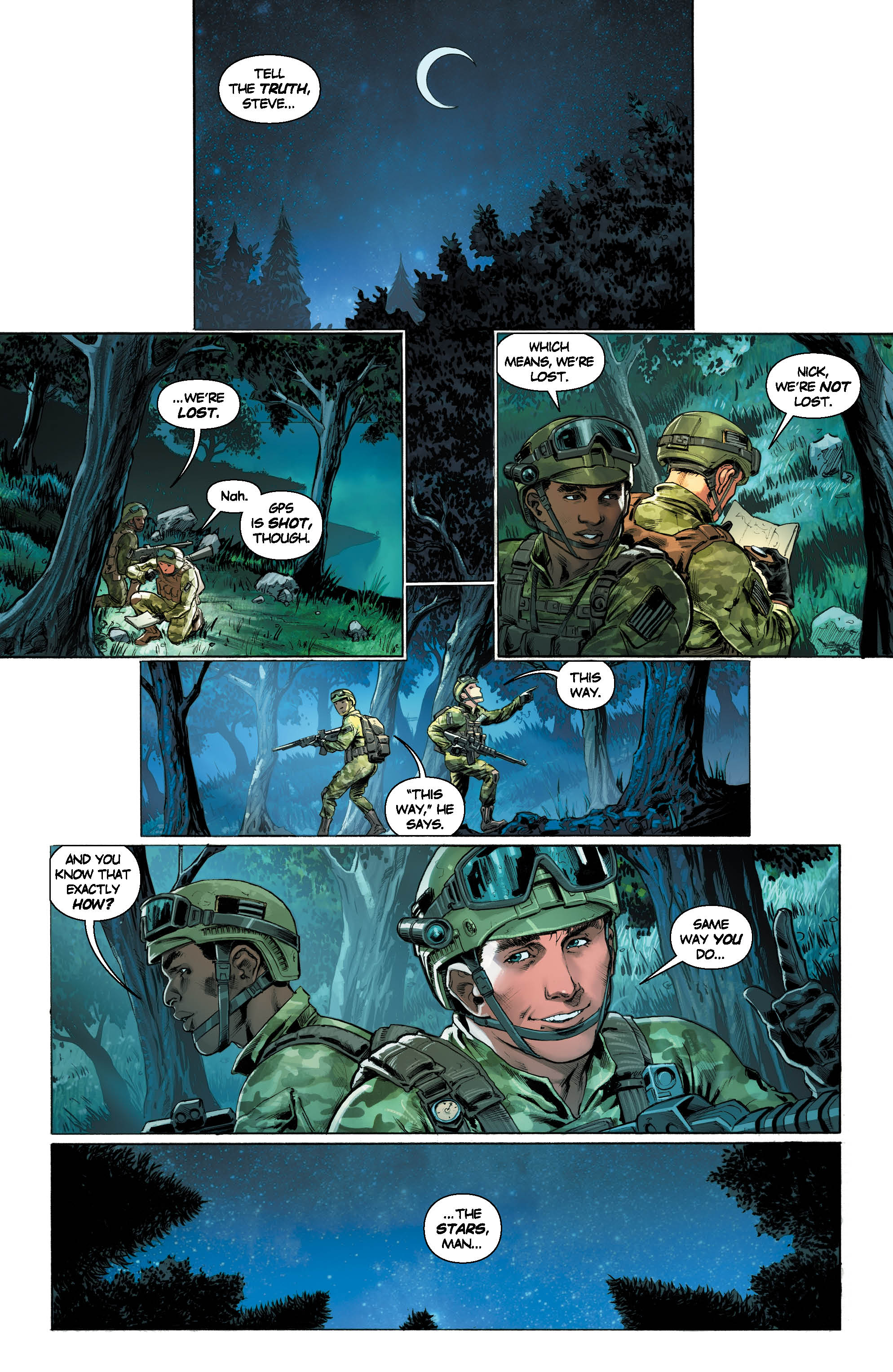
In all, I loved it, especially as I begun to break down its component parts. But Alex, what did you think about the issue? Particularly how it sets up Diana’s origin as a hero contrasted with Steve? And what do you think Nicola Scott brings to the book that is different than what Liam Sharp offers in the modern day odd-numbered issues?
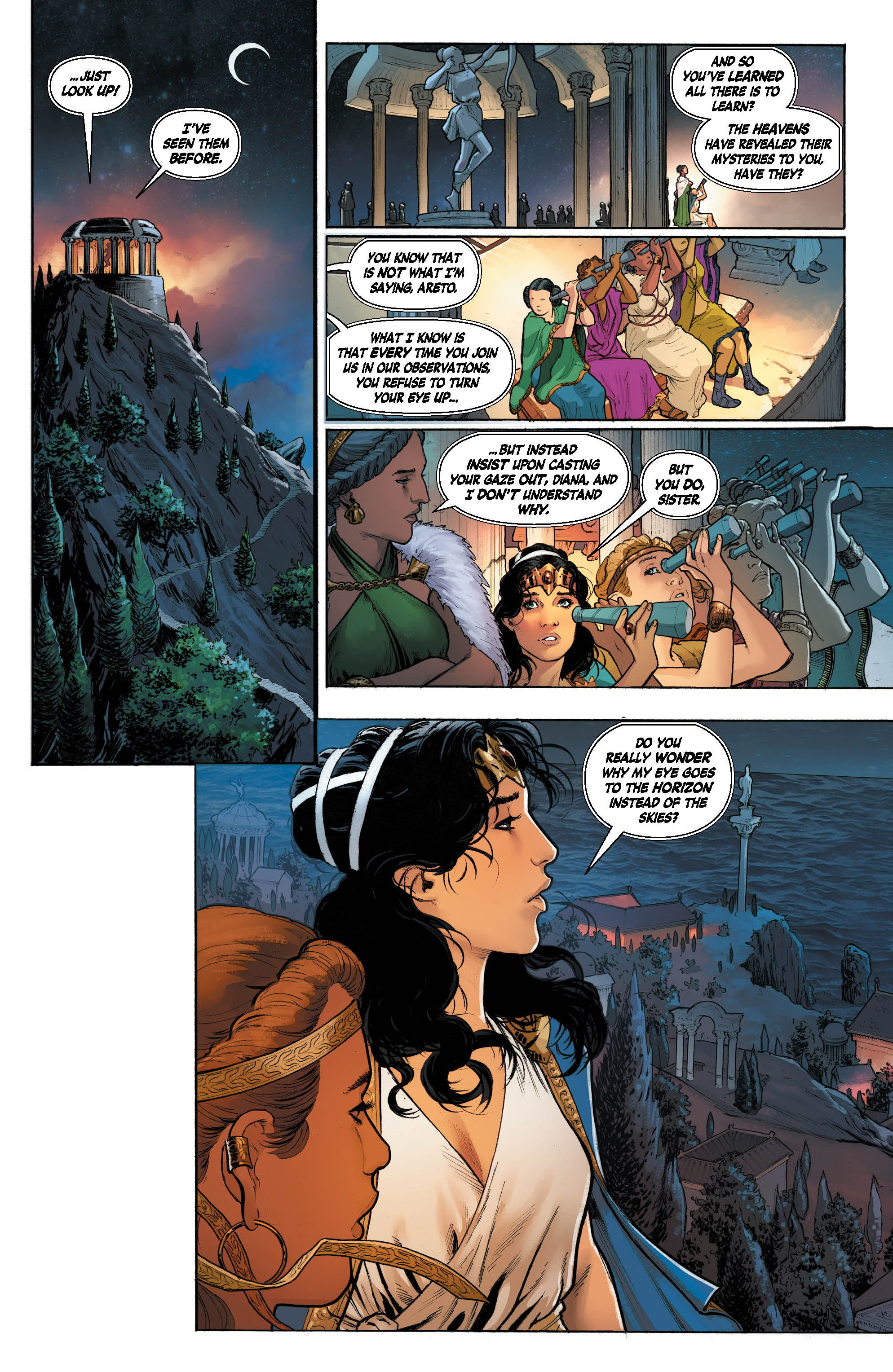
As you mentioned, Kyle, this issue is very much a paint-by-numbers setup, but it provides a much needed window into Steve’s and Diana’s lives that allows readers, particularly new ones, to get invested in these characters’ stories. While Wonder Woman #1 did a good job of showing readers who Diana and Steve are now, Wonder Woman #2 does the heavy lifting of starting to show us how they became that way. Wonder Woman is not a battle-hardened loner entreating the gods in this story. She is characterized by her wide-eyed youth and the love she has for her Amazonian sisters. In a particularly heartwarming scene, she and her mother exchange cool pleasantries until their veneers break and the reader realizes how much these two women love one another. At another point when Diana waxes poetic about leaving Themyscira, the Amazonian ancestral homeland, her sister Kasia warns her of what she will lose if she leaves, emphasizing that the action would break her heart. Wonder Woman, in essence, wants to explore but is pinned down by the love she has for her sisters and the love they show her in return.
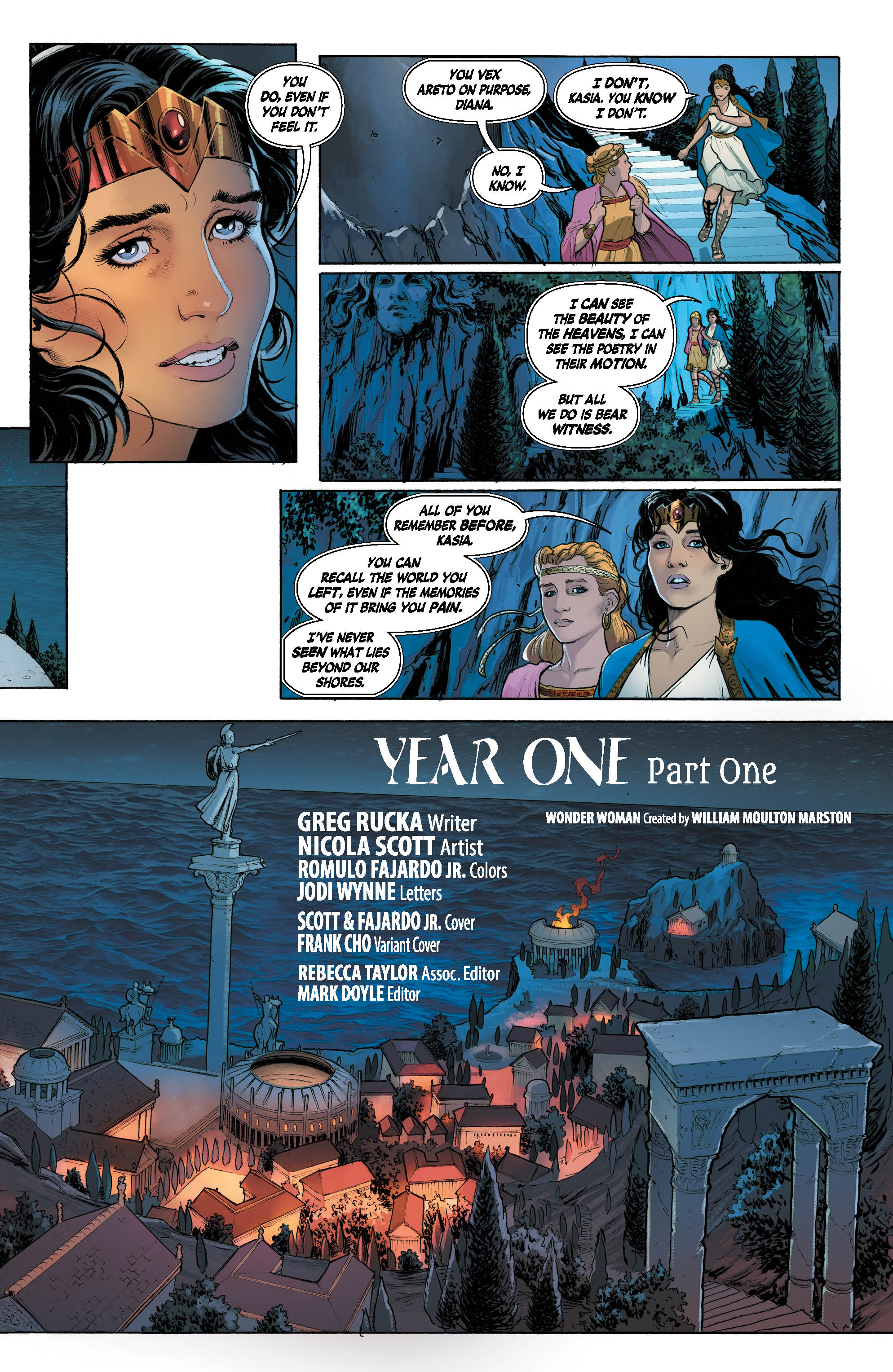
This hope is further buoyed by Scott’s artistic contributions to the issue. I think the juxtaposition between her style and “The Lies” artist Liam Sharp’s is cleverly utilized by Rucka to heighten the difference between Diana and Steve as they were in “Year One” and as they are in the present day story of “The Lies”. If one had to contrast Scott with Sharp in simple terms, one would say Scott is the light to Sharp’s dark. Scott puts an emphasis on the youth of Year One’s world. Diana, Steve, and everyone else has wide eyes and lean bodies. While Diana’s physical prowess is not taken from her in Wonder Woman #2, she does not have the bulk that Sharp places on her frame in Wonder Woman #1. Scott’s linework is generally clean and concise compared to Sharp’s, as the latter heavily mounts blacks onto armor and shadow to create an uneasy feeling that weighs on the reader as they move through the book.
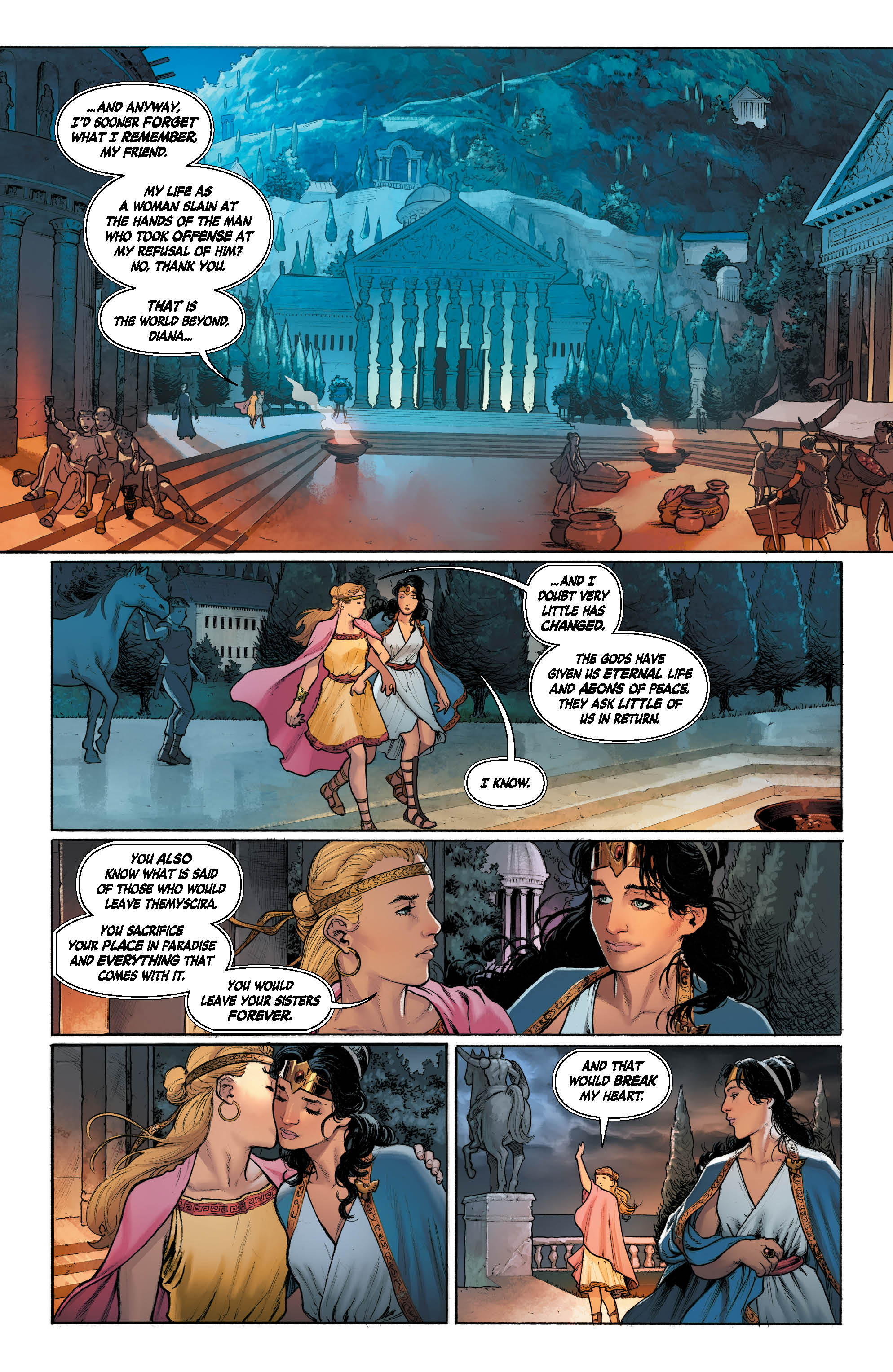
I know I was low on Wonder Woman #1 but Rucka has started to show his hand in Wonder Woman #2 and boy, he might just be holding pocket aces. The visual contrast between this issue and the last shows that nothing here is accidental or simply parallel. “The Lies” and “Year One” are not just story-lines running alongside each other. They are running into one another with a practiced gait. I’m sold and in for the ride. Anything to add, Kyle?
Kyle: Not on my end, this is a tremendously enjoyable read and gets the other half of Rucka’s big Wonder Woman epic off on the right foot. I think I can easily say we’re both in the Buy camp here.
Final Verdict: Buy
Check back for our reviews of Nightwing: Rebirth, Hal Jordan and the Green Lantern Corps: Rebirth, New Super-Man #1, and The Flash #2!
Previous Reviews:
Week One— BATMAN:REBIRTH, GREEN ARROW: REBIRTH, SUPERMAN: REBIRTH, and GREEN LANTERNS: REBIRTH
Week Three— BATMAN #1, GREEN ARROW #1, GREEN LANTERNS #1, SUPERMAN #1, TITANS: REBIRTH
Week Four– ACTION COMICS #958, AQUAMAN #1, DETECTIVE COMICS #935, THE FLASH #1, WONDER WOMAN #1


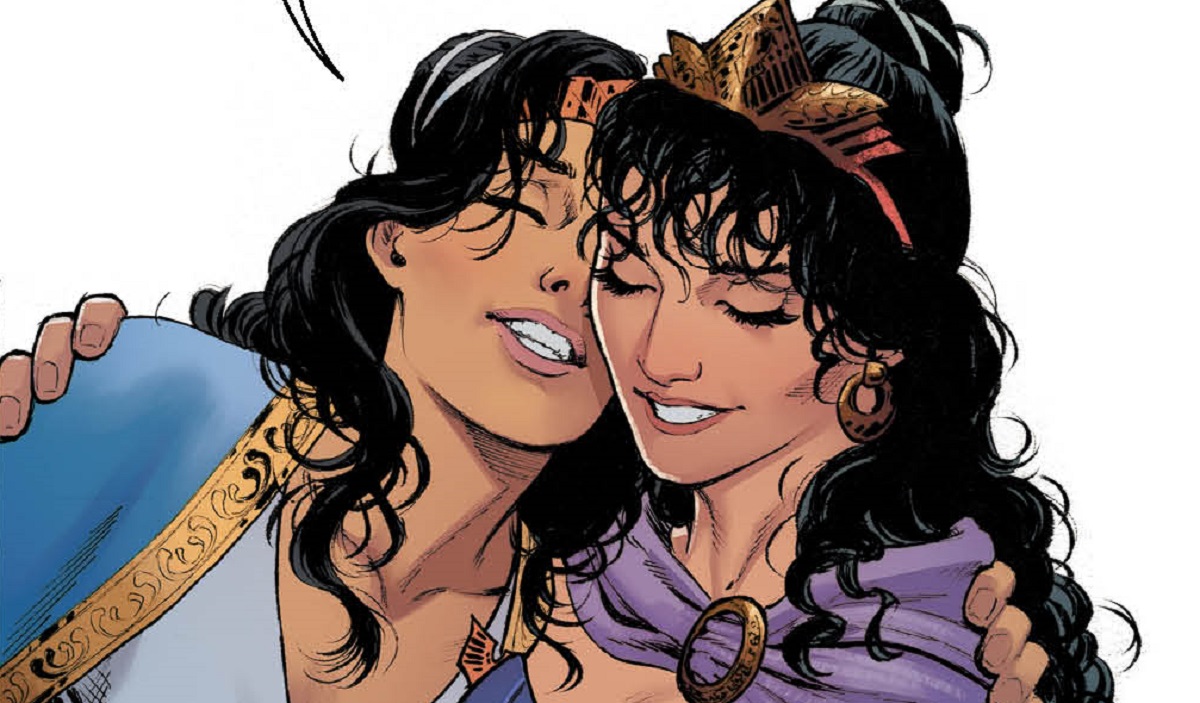
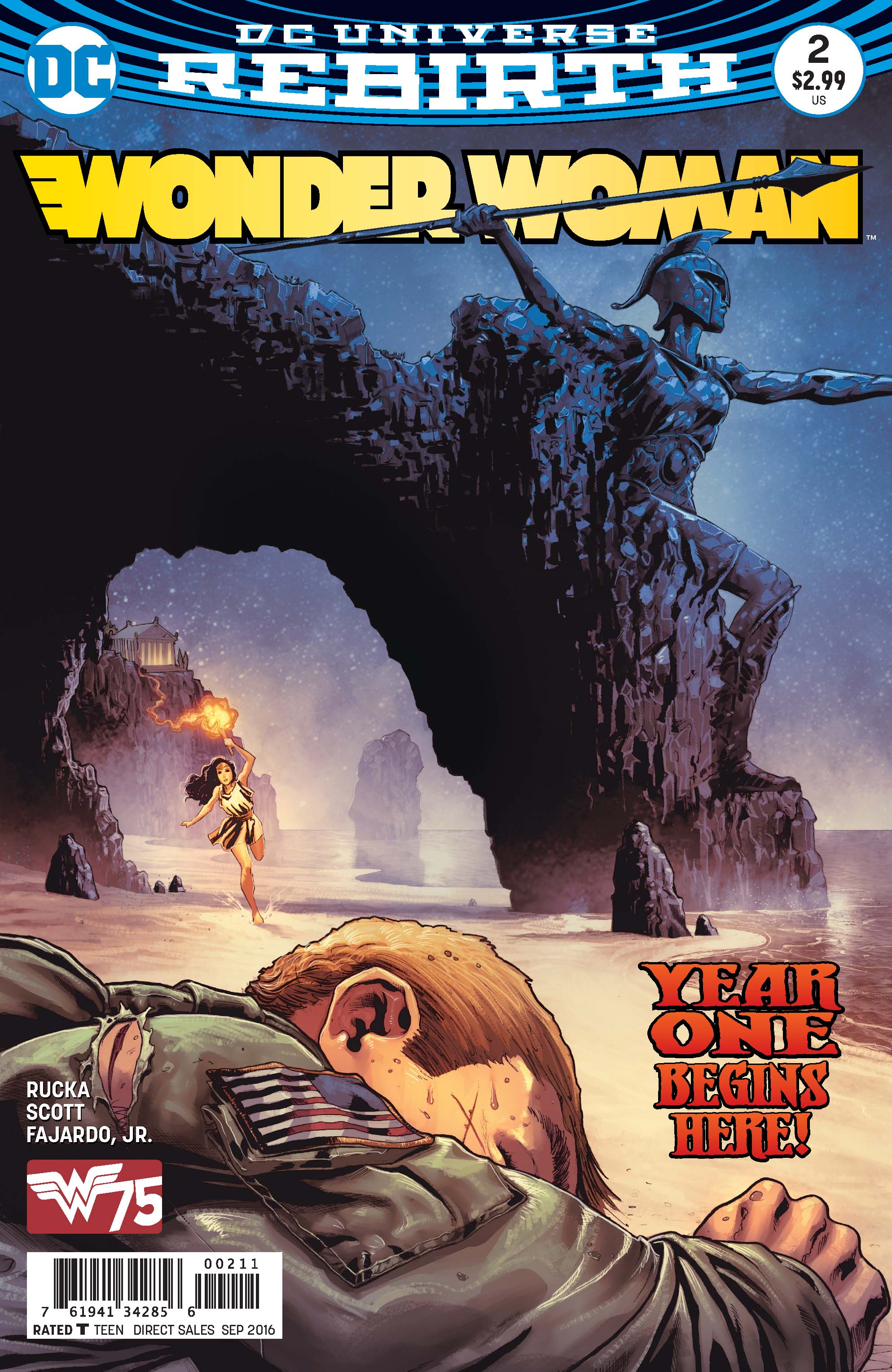 Wonder Woman #2
Wonder Woman #2




Why’s it ok for superman and batman to have countless origin stories but Wonder Woman’s barely gets touched on and there’s already complaints.
Comments are closed.